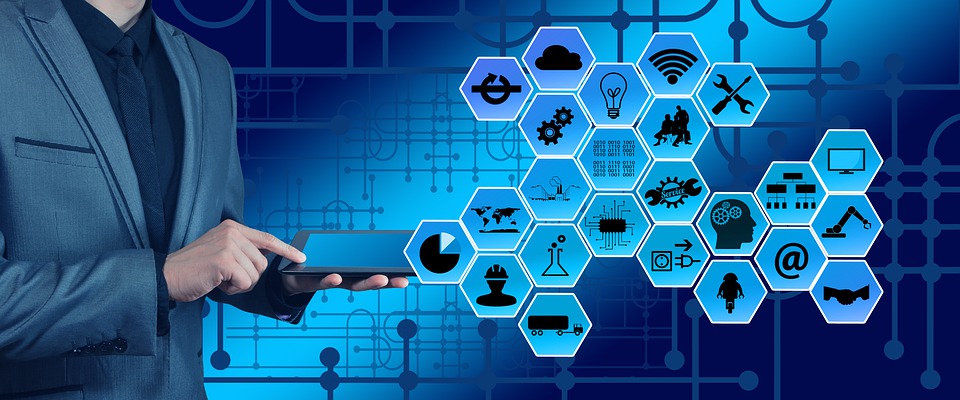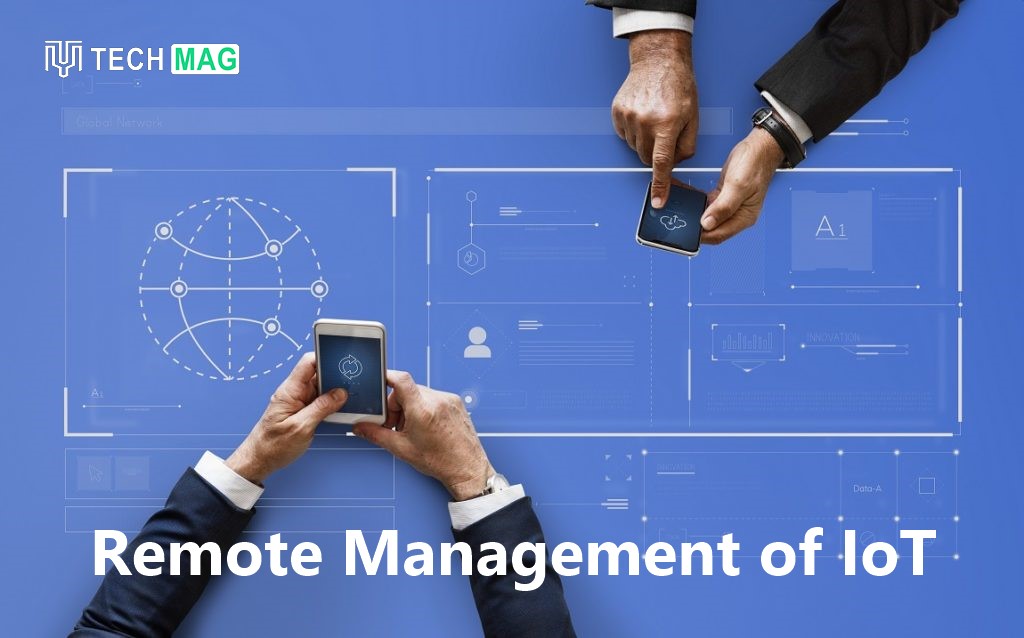Do you know the 11 Best Practices for the Remote Management of IoT? In today’s fast-paced world, the Internet of Things (IoT) has become an integral part of various industries, revolutionizing the way businesses operate. With the widespread adoption of IoT devices, remote management of IoT has become crucial to ensure smooth operations and maintain optimal performance. In this article, we will explore the 11 best practices for remote management of IoT that every business should consider to ensure effective and efficient IoT device management.
Explore the Contents
- 1 Introduction
- 2 Importance of Remote Management of IoT
- 3 Best Practices for Remote Management of IoT
- 3.1 1. Ensuring Robust Security Measures
- 3.2 2. Implementing Remote Monitoring and Troubleshooting
- 3.3 3. Establishing Redundancy and Failover Systems
- 3.4 4. Regular Firmware Updates and Patching
- 3.5 5. Implementing Device Authentication and Authorization
- 3.6 6. Monitoring and Managing Data Privacy
- 3.7 7. Ensuring Scalability and Flexibility
- 3.8 8. Effective Network Management
- 3.9 9. Implementing Disaster Recovery and Business Continuity Plans
- 3.10 10. Remote Configuration Management
- 3.11 11. Regular Performance Monitoring and Optimization
- 3.12 Conclusion
- 3.13 FAQs
Introduction
The Internet of Things (IoT) refers to the network of interconnected devices that communicate and exchange data with each other over the internet. These devices can range from simple sensors and actuators to complex industrial machinery and equipment. Remote management of IoT devices involves monitoring, configuring, troubleshooting, and updating these devices from a centralized location, without physical access to them.
Read More: Top 10 Ways to Find the Best IOT Platform 2023
Importance of Remote Management of IoT
As the number of IoT devices continues to grow rapidly, the need for remote management of IoT devices becomes critical. Remote management allows businesses to monitor and manage their IoT devices in real-time, regardless of their physical location. This ensures that businesses can proactively address any issues or vulnerabilities, optimize performance, and ensure seamless operations, without the need for physical intervention. Remote management of IoT devices also helps businesses reduce operational costs, improve security, and enhance overall productivity.
Best Practices for Remote Management of IoT

To effectively manage IoT devices remotely, businesses need to follow best practices that ensure robust security measures, efficient monitoring, and proactive troubleshooting. Let’s explore the 11 best practices for remote management of IoT devices in detail:
1. Ensuring Robust Security Measures
Security is a top priority when it comes to remote management of IoT devices. Businesses should implement robust security measures, including strong authentication and authorization mechanisms, encryption protocols, and firewalls, to protect against unauthorized access and data breaches. Regular security audits and vulnerability assessments should also be conducted to identify and address potential security risks.
2. Implementing Remote Monitoring and Troubleshooting
Remote monitoring and troubleshooting are essential for effective management of IoT devices. Businesses should use remote monitoring tools and platforms to continuously monitor the performance, health, and status of IoT devices. This allows businesses to proactively identify and address any issues or anomalies in real-time, reducing downtime and ensuring optimal performance. Troubleshooting mechanisms should also be in place to remotely diagnose and resolve issues without physical intervention.
3. Establishing Redundancy and Failover Systems
Establishing redundancy and failover systems is crucial for ensuring high availability and reliability of IoT devices. Redundancy involves deploying duplicate devices or systems to act as backups in case of failures, while failover systems automatically switch to backup systems in case of primary system failures. This ensures continuous operations and minimizes downtime in case of any failures in the IoT devices or systems. Businesses should carefully design and implement redundancy and failover systems based on their specific requirements and use cases.
4. Regular Firmware Updates and Patching
Firmware updates and patching are essential for keeping IoT devices secure and up-to-date. Regular updates should be performed to ensure that IoT devices are running on the latest firmware versions, which often contain security patches, bug fixes, and performance enhancements. Businesses should establish a robust patch management process that includes testing, scheduling, and deploying updates to IoT devices remotely, ensuring that devices are always running on the latest, most secure firmware versions.
5. Implementing Device Authentication and Authorization
Device authentication and authorization are critical for ensuring that only authorized devices can access and interact with the IoT network. Businesses should implement strong authentication mechanisms, such as two-factor authentication, certificate-based authentication, or biometric authentication, to verify the identity of devices before granting access. Authorization mechanisms should also be in place to restrict access based on the roles and permissions of devices, ensuring that only authorized actions can be performed remotely.
6. Monitoring and Managing Data Privacy
IoT devices often collect and transmit sensitive data, making data privacy a significant concern. Businesses should implement robust data privacy measures, such as encryption, data masking, and data anonymization, to protect the confidentiality and integrity of data transmitted between IoT devices and the central management system. Additionally, businesses should establish proper data governance practices, including data classification, data retention policies, and access controls, to effectively manage data privacy and comply with data protection regulations.
7. Ensuring Scalability and Flexibility
IoT ecosystems can be complex and rapidly evolving, requiring scalable and flexible management solutions. Businesses should implement management systems that can handle the growing number of IoT devices, diverse device types, and changing device configurations. Scalability can be achieved through cloud-based solutions that can handle the increasing data volume, device registrations, and management tasks. Flexibility can be achieved through modular and extensible management platforms that can accommodate different IoT device vendors, protocols, and standards.
8. Effective Network Management
The network is a critical component of any IoT ecosystem, and effective network management is crucial for ensuring reliable and secure communication between IoT devices and the management system. Businesses should implement robust network management practices, including network monitoring, traffic analysis, and configuration management, to optimize network performance, identify and resolve network-related issues, and ensure secure communication between devices and the central management system. Additionally, businesses should implement network segmentation and isolation to prevent unauthorized access and mitigate the impact of potential security breaches.
9. Implementing Disaster Recovery and Business Continuity Plans
Disaster recovery and business continuity planning are essential for ensuring uninterrupted operations of IoT devices, even in the face of unforeseen events or disasters. Businesses should establish disaster recovery plans that outline the steps to be taken in case of device failures, network outages, or other emergencies. Business continuity plans should also be in place to ensure that critical IoT operations can continue despite disruptions. These plans should be regularly tested and updated to ensure their effectiveness in case of emergencies.
10. Remote Configuration Management
Remote configuration management involves managing the configurations and settings of IoT devices from a central management system. Businesses should implement robust remote configuration management practices that allow them to remotely configure and manage various settings, such as device parameters, thresholds, policies, and rules. Remote configuration management enables businesses to ensure consistent configurations across all IoT devices, enforce security policies, and optimize device performance.
11. Regular Performance Monitoring and Optimization
Regular performance monitoring and optimization are essential for ensuring that IoT devices are operating at their optimal level. Businesses should implement performance monitoring tools and techniques that allow them to continuously monitor the performance metrics of IoT devices, such as CPU usage, memory utilization, network latency, and battery life. By monitoring the performance of IoT devices, businesses can proactively identify and resolve performance issues, optimize device resources, and ensure smooth operations.
Read More: 8 Best IoT Careers in Pakistan 2023
Conclusion
Effective remote management of IoT devices is critical for businesses to harness the full potential of IoT technology. By following the best practices outlined above, businesses can ensure the security, reliability, and performance of their IoT devices, while also maintaining data privacy and complying with relevant regulations. Remote management allows businesses to remotely monitor, configure, and optimize IoT devices, enabling them to scale their IoT deployments, reduce downtime, and maximize the value of their IoT investments.
FAQs
Can I remotely manage different types of IoT devices using the same management system?
Yes, businesses can implement a modular and extensible management platform that can accommodate different IoT device vendors, protocols, and standards, allowing for remote management of diverse types of IoT devices.
How often should I perform firmware updates and patching on my IoT devices?
Firmware updates and patching should be performed regularly, following a robust patch management process that includes testing, scheduling, and deploying updates to IoT devices remotely. It is recommended to stay on the latest firmware versions to ensure security and performance.
What are some common challenges in remote management of IoT devices?
Some common challenges in remote management of IoT devices include ensuring security, scalability, and flexibility, managing diverse types of devices, handling network issues, and ensuring data privacy and compliance with regulations.
How can remote management of IoT devices help in reducing downtime?
Remote management allows businesses to proactively monitor and resolve performance issues, configure and optimize devices, and implement redundancy and failover systems, reducing the downtime caused by device failures or network outages.
How important is data privacy in remote management of IoT devices?
Data privacy is crucial in remote management of IoT devices as these devices often collect and transmit sensitive data. Implementing robust data privacy measures, such as encryption, data masking, and access controls, is essential to protect the confidentiality and integrity of data transmitted between devices and the central management system.



